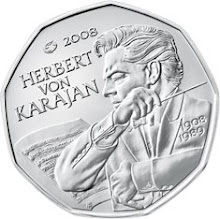Many students use the following practice routine:
- First, practice scales or technical exercises until the fingers are limbered up. Continue this for 30 minutes or longer if you have time, to improve technique especially by using exercises such as the Hanon series.
- Then take a new piece of music and slowly read it for a page or two, carefully playing both hands together, starting from the beginning. This slow play is repeated until it can be performed reasonably well and then it is gradually speeded up until the final speed is attained. A metronome might be used for this gradual speed-up.
- At the end of a two hour practice, the fingers are flying, so the students can play as fast as they want and enjoy the experience before quitting. After all, they are tired of practicing so that they can relax, play their hearts out at full speed; this is the time to enjoy the music!
- Once the piece can be played satisfactorily, memorize it and practice "until the music is in the hands". (v) On the day of the recital or lesson, practice the piece at correct speed (or faster!) as many times as possible in order to make sure that it is in top condition. This is the last chance; obviously, the more practice, the better.
EVERY STEP OF THIS PROCEDURE IS WRONG! The above will almost guarantee that the students will not progress beyond intermediate level even if they practice several hours daily. For example, this method tells the students nothing about what to do when they hit an impossible passage except to keep repeating, sometimes for a lifetime, with no clear idea of when or how the needed technique will be acquired. This method leaves the task of learning to play the piano completely to the student. Moreover, the music will come out flat during the recital and unexpected flubs will be almost unavoidable. You will understand all this as soon as you read about the more efficient methods described below.
Lack of progress is the main reason why so many students quit piano. Students, especially youngsters, are smart; why work like a slave and learn nothing? Reward the students and you will get more dedication than any teacher could want. You can be a doctor, scientist, lawyer, athlete, or anything you want, and still become a good pianist. This is because there are methods that let you acquire technique qickly, as we shall soon see.
Note that the above practice routine is an "intuitive" (or "instinctive") method. If a person of average intelligence were marooned on an island with just a piano and decided to practice, that person would most likely devise a practice method like the one above. That is, a teacher using this type of practice routine isn't teaching anything -- the method is intuitive. When I first started to compile the "correct learning procedures" of this book, I was struck most by how counter-intuitive many of them were. I will explain later why they are so counter-intuitive but this offers the best explanation for why so many teachers use the intuitive approach. These teachers never learned the correct methods and therefore gravitated naturally to the intuitive methods. The trouble with counter-intuitive methods is that they are harder to adopt than intuitive ones; your brain is constantly telling you that they are not right and to get back to the intuitive ones. This message from the brain can become irresistible just before a lesson or recital -- try telling (uninformed) students not to enjoy playing their finished pieces before quitting practice, or not to over-practice on recital day! It is not just the students or teachers. It is also any parents or friends with good intentions that influence the practice routines of young students. Parents who are not informed will always force their children to use the intuitive methods. This is one reason why good teachers always ask parents to accompany their children to the lessons. If the parents are not informed, there is a virtual guarantee that they will force the students to use methods that are in direct contradiction to the teacher's instructions.
Students who started with the correct methods from the beginning are the "apparently lucky" ones. However, they must be careful later in life if they weren't taught what the wrong methods are. Once they leave the teacher, they can stumble into the intuitive methods and have no idea why everything is suddenly falling apart. It's like a bear that had never seen a bear trap -- it gets caught every time. These "lucky" ones often can't teach either, because they may not know that many intuitive methods can lead to disaster. On the other hand, the apparently "unlucky" students who first learned the intuitive methods and then changed over to the better ones have some unexpected advantages. They know both the right and wrong methods and often make much better teachers. Therefore, although this book teaches the correct methods, it is just as important to know what NOT to do, and why. This is why the most frequently used wrong methods are extensively discussed here.
We describe the components of a proper practice routine in the following sections. They are presented in approximately the order in which a student might use them from start to finish of a new piece of music.


3 comments:
=.=
u ownself think de?
thank u 4 yr advice!!
thank u very much...
senior!!
your welcome...
daniel you think leh?=.=
Post a Comment